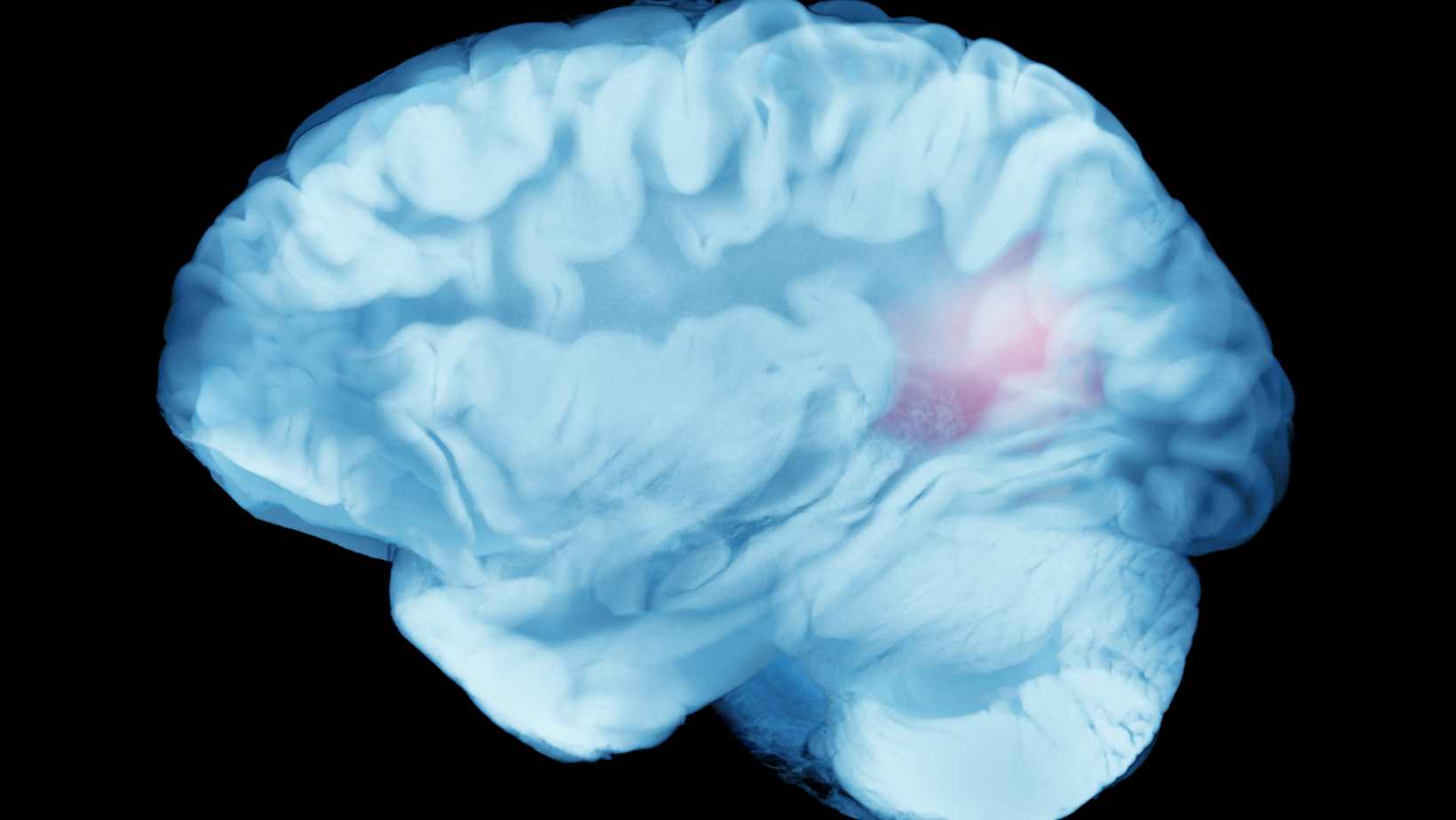Table of Contents
ToggleHere’s Why PTSD Gets Worse Before It Gets Better
“It gets worse before it gets better”– this is a statement often quoted by people who’ve undergone or overcome a psychological disorder. Well, it holds true for PTSD too. PTSD is a disorder that hits you like a wrecking ball – it is a wholesome that affects your mind and body, usually for a long period of time.
Many people feel worse before they feel better during trauma recovery. And this can be confusing, scary, and discouraging.
But what if we told you this stage is normal? What if worsening symptoms are actually a sign that your mind is doing deep, important healing work?
In this blog, we will explain why PTSD often intensifies during recovery, what you can expect, and how to stay strong through it all.
What is PTSD?
Before understanding why healing can feel so heavy, let’s understand what PTSD really is.
Defining PTSD (Post-Traumatic Stress Disorder)
PTSD is a mental health condition triggered by a traumatic event. It might be something you saw, lived through, or even heard about.
According to the DSM-5, PTSD is diagnosed when someone has intense, disturbing thoughts and feelings related to their trauma long after the event has ended.
Statistics from the National Center for PTSD show that about 6% of people in the U.S. will have PTSD at some point in their lives. Veterans, survivors of abuse, car crash victims, and many others are included in this group.
Symptoms of PTSD
Symptoms can vary, but most people with PTSD report these:
- Intrusive thoughts: Sudden memories, flashbacks, or nightmares
- Avoidance: Staying away from places, people, or feelings that remind them of the trauma
- Hypervigilance: Always feeling on edge, startled easily
- Negative mood changes: Feeling numb, guilty, or angry
As people begin therapy, they start facing these feelings instead of avoiding them. This process is called emotional reprocessing, and it can be intense.

Why PTSD May Worsen During Recovery?
It sounds backward, but getting better sometimes starts with feeling worse. Here’s why.
What “Worse Before Better” Really Means
In the trauma healing world, there’s a concept called the healing crisis. It’s when your symptoms spike as you start doing real emotional work.
- You begin to talk about things you’ve avoided for years
- Buried memories may surface
- Your nervous system gets activated, causing anxiety, irritability, or panic attacks
This isn’t a sign of failure. It’s your brain finally starting the real work of healing trauma symptoms.
Activation of the Nervous System During Treatment
When you begin therapy for PTSD, your body can enter fight, flight, or freeze mode again, even if there’s no danger now.
Here’s what happens in your brain:
| Brain Area | What Happens During Trauma Recovery |
|---|---|
| Amygdala | Becomes more active, triggers fear signals |
| Prefrontal Cortex | May struggle to calm you down |
| Hippocampus | Tries to sort past from present, often overwhelmed |
This spike in your trauma response explains why anxiety or flashbacks may increase during early treatment.
Re-experiencing Trauma Through Exposure Therapy
Many therapies used to treat PTSD involve going back into the memory safely. This is called exposure therapy or EMDR (Eye Movement Desensitization and Reprocessing).
During these sessions:
- You revisit memories you avoided
- You feel the emotions linked to the event
- You reframe the meaning of what happened
According to studies, people may feel worse for a few weeks but improve significantly after completing these therapies.
The Four Stages of PTSD Recovery?
Recovering from PTSD isn’t a straight line. It’s more like diving into deep waters—unpredictable, often scary, and filled with emotional waves. But each stage, no matter how painful, brings you closer to healing. Let’s break down these therapy stages to understand what happens at each step and why the symptoms may feel more intense as you heal.
| Stage | Description | Key Emotions / Reactions | What to Expect |
|---|---|---|---|
| 1. Impact Phase | This is the immediate reaction after the traumatic event. The person may feel numb, shocked, or frozen in time. | Shock, fear, helplessness, guilt, hypervigilance | The person may struggle to understand or process what happened; reactions vary by individual. |
| 2. Denial Phase | The person either consciously or unconsciously avoids the memory of trauma. Suppression is common and may seem helpful at first, but it delays healing. | Avoidance, emotional numbness, repression | Bottling up emotions can lead to emotional outbursts or breakdowns later. |
| 3. Intermediate Recovery | The individual tries to return to daily life. Reactions differ—some feel supported (altruism), others feel abandoned or burdened (disillusionment). | Hope, frustration, mixed emotions | This phase includes flashbacks, nightmares, and emotional swings. Start building coping strategies. |
| 4. Long-Term Recovery | A more stable healing phase, but often the most emotionally painful. Symptoms may worsen as deep-rooted trauma is addressed and confronted. | Anger, despair, anxiety, temptation to give up | Facing “inner demons” is hard, but necessary. Focus shifts to rebuilding and finding a lasting solution. |
Even outside of therapy, many things can make PTSD feel worse.
Trauma-Focused Therapy & Emotional Flashbacks
When therapy starts targeting the core trauma, it can trigger intense emotional flashbacks. These aren’t just memories. They feel like the trauma is happening now.
You might feel:
- Sudden fear without knowing why
- A sense of helplessness or being small
- Anger or sadness out of nowhere
This means therapy is working, but it doesn’t always feel that way.
Environmental and Emotional Triggers
Some triggers are around you every day, and you may not even notice.
Common trauma triggers:
- Sounds (sirens, yelling)
- Smells (like alcohol, hospital smell)
- Places (bedroom, car, alley)
- Dates (anniversaries of the trauma)
For people with complex PTSD (C-PTSD), everyday life itself can feel unsafe.
Internal Stressors: Guilt, Shame, and Self-Doubt
Healing brings up buried emotions:
- Survivor’s guilt: “Why did I live when others didn’t?”
- Shame: “It was my fault.”
- Self-doubt: “Will I ever be okay again?”
These thoughts increase emotional dysregulation, making you feel out of control.
How to Know You’re Still Making Progress
Even if it feels worse, you might still be healing underneath.
Signs That Healing Is Still Happening Despite the Pain
These signs show that your trauma recovery process is working:
- You notice your emotions instead of avoiding them
- You can name what you’re feeling (anger, fear, sadness)
- You’re attending therapy regularly
- You’re able to talk about the trauma, even if it’s hard
Progress is not the absence of pain. It’s the ability to face it.
Building Resilience and Emotional Regulation Skills
As you go through the PTSD treatment stages, you start building real coping tools:
- Learning to pause before reacting
- Setting boundaries without guilt
- Breathing techniques to calm your body
Over time, this leads to fewer breakdowns and stronger emotional balance.
Tips for Navigating the Tough Stages of PTSD Recovery
Work Closely With a Trained Therapist
Don’t do this alone. A strong connection with a therapist makes a big difference.
- Look for someone trained in therapy for PTSD
- Build trust over time
- Let them know when things feel too intense
Practice Grounding and Self-Soothing Techniques
These methods bring you back to the present when flashbacks hit.
Helpful tools:
- Box breathing: Breathe in-4, hold-4, out-4, hold-4
- 5-4-3-2-1 method: Name 5 things you can see, 4 you can touch, and so on
- Use somatic practices to release body tension
These lower somatic symptoms like shaking or chest pain.
Lean on Support Systems
Healing gets easier when you’re not isolated.
Support options:
- Trusted friends or family
- Online or in-person support groups
- Organizations like NAMI or PTSD Alliance
You don’t need to share everything, just enough so you’re not alone.
Know When to Seek Medical Intervention
Sometimes, therapy alone isn’t enough.
If you’re overwhelmed, speak to a doctor about:
- SSRIs or other psychiatric medication
- Sleep support
- Inpatient help if needed
There is no shame in asking for more support.
When to Worry: Is It Actually Getting Worse or Just Healing?
It’s important to know the difference between healing pain and actual danger.
Normal pain:
- Sadness after therapy
- Increased dreams or memories
- Feeling vulnerable
Red flags:
- Suicidal thoughts
- Self-harm urges
- Losing touch with reality
If you or someone you know is in crisis, call a local emergency number or mental health helpline. Don’t wait. One should always seek proper neurocritical care.
Ready to Heal? Book Your Consultation With Dr. Chandril Chugh
After a storm comes the calm. PTSD may break you at first, but overcoming it will only make you stronger. Never lose hope in yourself, and don’t let the inner demons control or hurt you. Remind yourself that these scary nights are going to pass and there shall be a beautiful dawn soon.
Recovery can feel like a maze. You may not know if you’re going forward or backward. But this is part of the healing crisis. You are not broken. You are healing in real time.
Dr. Chandril Chugh, a U.S.-trained, board-certified neurologist, understands the deep connection between trauma and mental health. With his experience treating complex conditions like post-traumatic stress, he offers both brain-based insight and emotional guidance.
If you’re feeling stuck or unsure if your PTSD is improving, don’t wait.
Click here to book a consultation with Dr. Chugh and take the next step in your recovery.
FAQs
1. Can PTSD really get worse during therapy?
Yes. As you revisit painful memories and emotions, symptoms like flashbacks or panic can increase. This is normal. Many patients experience this during exposure therapy or EMDR. Still, it’s a sign your brain is doing real healing work. Book a consultation with Dr. Chugh if unsure.
2. How long does the “worse before better” phase last?
It varies. Some people feel worse for a few weeks, others for months. It depends on the trauma, therapy type, and your support. The key is consistency. If you’re unsure, speak with Dr. Chugh to evaluate your PTSD treatment stages.
3. What if I feel like giving up?
Many people do at some point. It doesn’t mean you’re weak. It means your brain is working through a very real storm. You don’t have to do it alone. Reach out to Dr. Chugh or a therapist trained in trauma recovery process.
4. Is medication necessary for PTSD?
Not always. But in some cases, medication can help stabilize mood, improve sleep, and reduce anxiety. Dr. Chugh can help assess if you need extra medical support based on your symptoms.

This article is medically reviewed by Dr. Chandril Chugh, Board-Certified Neurologist, providing expert insights and reliable health information.
→ Book a consultation to discover which remedies suit your needs best.
About Author | Instagram | YouTube | Linkedin




